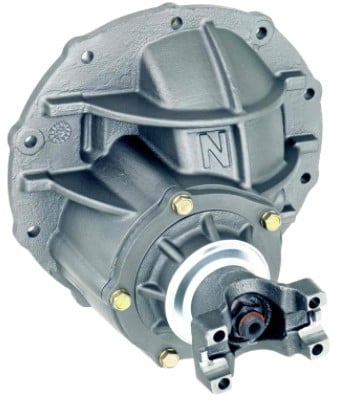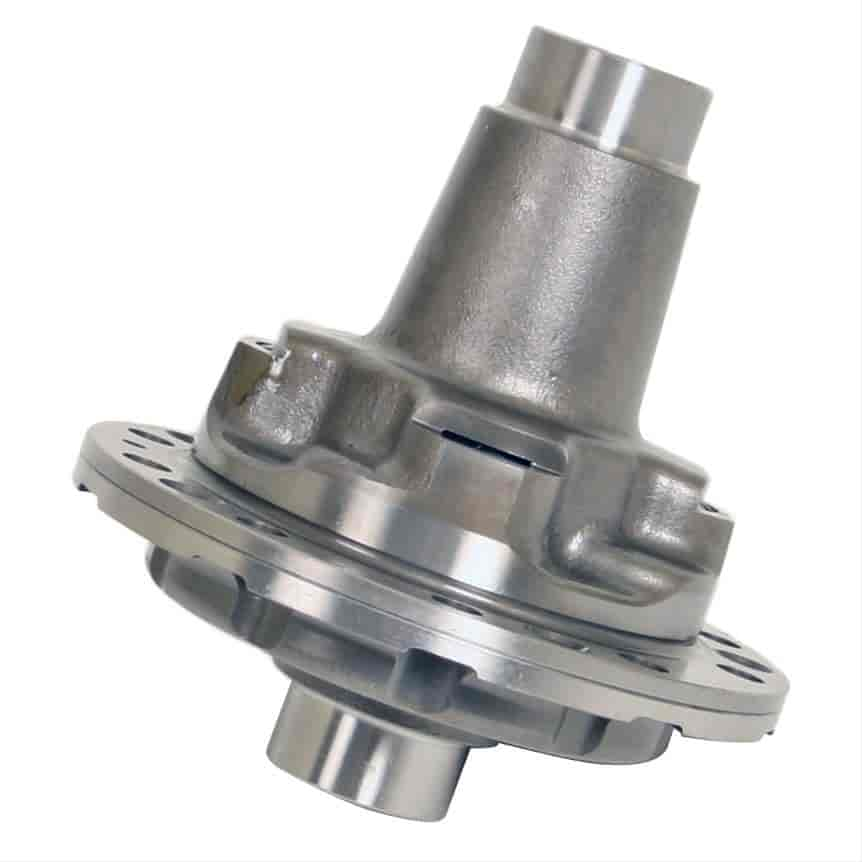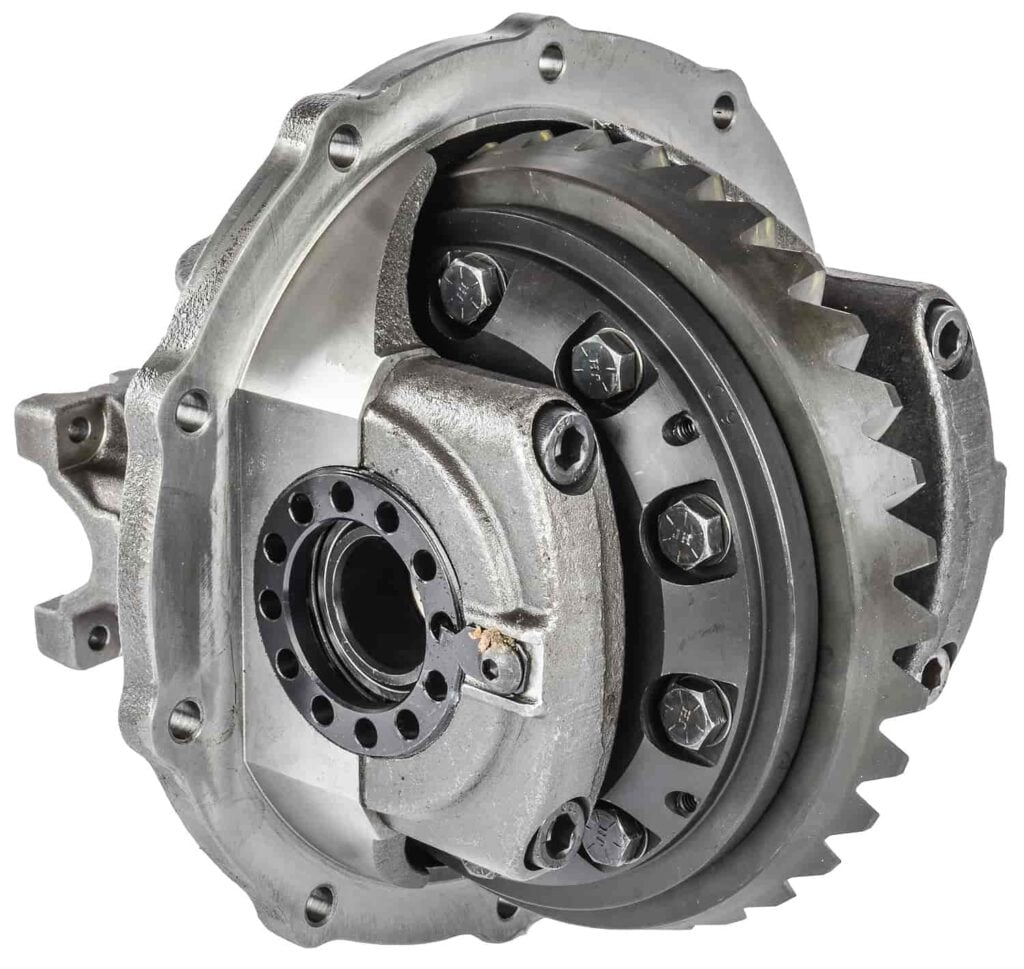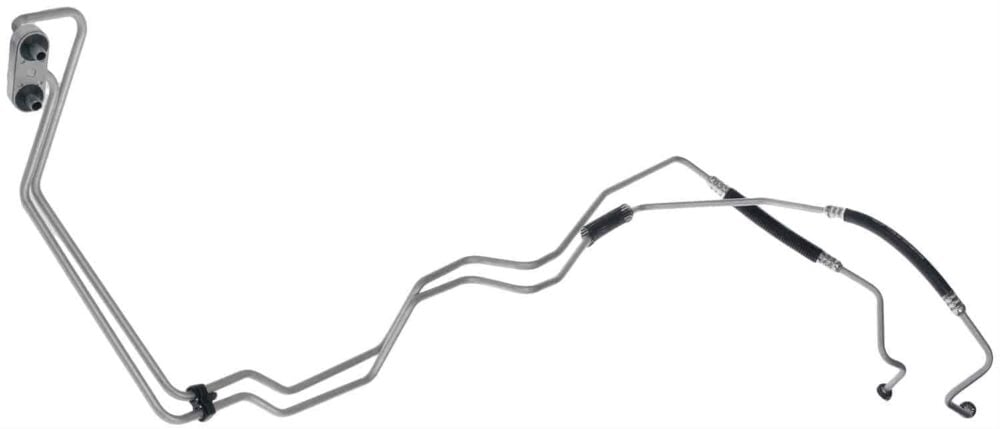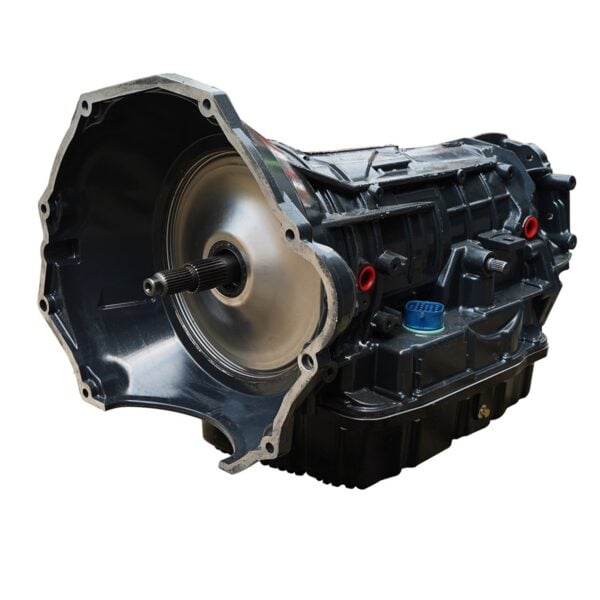The Ford 9 inch rear end is one of the most popular and strongest drivetrain components used in original production cars and trucks, as well as performance and race vehicles. The robust design allows them to handle a lot of horsepower and replacement parts are plentiful in the aftermarket world. This makes them a popular axle for vehicles on the street and at the track. It is important to understand the design, components, identification, and functions before building or rebuilding a Ford 9" rear axle. Below are answers to the most common questions about the Ford 9” differential:
How To Identify A Ford 9 Inch Rear End
When attempting to identify Ford 9 inch rear end specs, several indicators will help you. First, the Ford 9” has a third member bolted to the front of the axle housing and there is not a traditional rear housing cover as is found with many other rear ends.
Ford 9” housings were also produced from 1957 through 1986.
The next thing to determine the difference between a Ford 9” or a Ford 8” rear housing. The "weaker" Ford 8” rear axle is very similar to its 9” counterpart and can often be mistaken for it without knowing what to look for. All Ford 8” third member case nuts are accessible with a socket. Due to the design on the Ford 9”, the bottom two case nuts require a wrench for both assembly and disassembly, which will help you confirm which third member you are working on.
The strongest production Ford 9” case from Ford Motor Company is made from nodular iron. It is identified by the letter “N” cast into the inside wall or front of most of the production third members between two of the strength “ribs”. Aftermarket nodular iron third members are also available from JEGS.
Most 9" rear differentials will be the "open" type. To recognize a locking or limited slip 9" differential, look for a metal tag on one of the bolts that holds the center section to the housing. There is also a gear ratio stamped on the tag. For example: The tag will say: 350 for 3.50:1 ring and pinion gear ratio. If there is an "L" in between, you should have a locking or limited slip differential. An example gear ratio with a locking or limited slip differential would read "3L50" on the metal tag: Sometimes the period is on the tag as in 3.50, depending on the year and model. If the tag is missing, the third member will need to be removed and inspected to confirm the diff type and gear ratio.
Note: There's nothing to guarantee that a stock differential is in the axle you're buying used. Therefore, it's best to verify by inspection to be sure.
Additional 9" Ford Housing Identification Tips (By Year)
- 1957 - no dimples, flat center band up the center of the rear cover, bottom drain plug
- 1958-59 - two dimples on back of housing, flat center band, some had drain holes
- 1960-67 - two dimples, flat center band, oil level hole in back cover
- 1963-77 Lincoln, LTD, Thunderbirds have 9.375 inch centers, housings were cut away at the gasket surface for ring gear clearance. One curved rib at the front top portion of differential. Strong, but limited gear options.
Common Ford 9" Axle Housing Widths
- 65-66 Mustang = 57.25 inches
- 67-70 Mustang = 59.25 inches
- 71-73 Mustang = 61.25 inches
- 77-81 Versailles = 58.50 inches
- 67-73 Mustang, Torino, Ranchero, Fairlane = 59.25 inches to 61.25 inches
- 57-59 Ranchero and Wagon = 57.25 inches
- 66-77 Bronco = 58 inches (axles have 5-on-5 1/2 inch diameter bolt circle)
- 77-81 Granada/Versailles = 58 inches
- 67-71 Comet, Cougar, Mustang, Fairlane = 59.25 inches
- 64 Falcon = 58 inches
- 67 Cougar = 60 inches
- 67 Fairlane = 63.50 inches (coil spring suspension)
- 72 Ford Van 3/4 ton = 68 inches
- 67-73 Torino, Ranchero, Fairlane = 59.25 inches or 61.25 inches
- 67-71 Comet, Cougar, Fairlane = 59.25 inches
Types Of 9" Ford Axle Housings
- 67-73 Mustang/Cougar - light duty, thinnest housing material, small axle bearings, 28 and 31 splines
- 57-68 passenger cars and 1/2 ton trucks - medium duty, stronger than Mustang design, 28 and 31 splines
- 69-77 Ford Galaxies (coil spring suspension), Lincoln cars (coil spring suspension), and late pickups (leaf spring suspension)- 3.25 inch diameter all the way to the backing plate, coil housings have upper control arm mount.
9" Ford Axle Shaft Facts And Information
- 28-spline axles cannot be shortened because they're tapered (except 69-73 Mustang and Cougars).
- 1972 and earlier 31-spline axles can be shortened
- 1973 and later 9" (big cars) have a 5-on-5 bolt circle and the axles cannot be shortened
How To Build Or Rebuild A Ford 9 Inch Rear End
When rebuilding or building a Ford nine inch rear end, a differential installation kit will be required. The components in the kit can vary depending on what you need (such as just shims, or also including carrier bearings and axle bearings) as well as differences like bearing size, which needs to be determined beforehand. Install kits typically include shims, gaskets, seals, a pinion nut, ring gear bolts, marking compound, bearings, as well as differential rebuild components. For rebuilds, the first step is disassembly and inspection to confirm what needs replaced and what will be reused. Once a build list is created, the required components can be purchased. A JEGS expert is ready to answer your questions and help you find what you need should parts selection assistance be required. Components you may choose to purchase include a new differential, third member, ring and pinion gear set, axle housing, as well as axle shafts. When all parts are ready for the build, you can begin assembling the third member using the instructions included with the specific components purchased. Proper clearances such as pinion depth, backlash, and preload, as well as torque settings must be followed for proper operation and long life of the assembly. Once the third member is assembled, it is ready to be installed into the axle housing. The axle shafts can then be installed. Finally, any additional components such as brakes or suspension can be assembled to complete the build / rebuild of the rear end.
How to Narrow a 9 Inch Ford Rear End
When narrowing a 9 inch Ford rear end, the first step is determining the overall length you need. One way this can be done is by putting the vehicle on jack stands and mocking up the wheels and tires that will be used, moving them in and out of the wheel wells until you find the position and stance you like. Next, confirm both sides are perfectly symmetrical by measuring from an identical reference point (such as a spot on the quarter panel or frame) on both sides. Then measure from the inside of the wheel on one side to the inside of the wheel on the other side. This will provide the overall length of the 9 in Ford rear end you will need, including brakes from inside-of-wheel to inside-of-wheel.
Next, measure the donor Ford 9 inch axle, including the installed braking system you will be using to confirm its initial overall length. If you don’t have an assembled housing to begin with, you will have to carefully measure and calculate to get the correct assembled length.
Next, calculate how many inches the donor rear end assembly needs to lose in order to match the overall length you need. Then remove the brakes, Ford 9 inch axles, and measure and record the overall length of the rear axle from outside-of-bearing-end to outside-of-bearing-end. You can then cut off the original bearing ends. After the ends are cut off, weld any brackets that attach to the axle tubes for the shocks, ladder bar brackets, or any other rear suspension components. After purchasing new bearing ends mock them in place on the housing ends and re-measure since replacement bearing ends can be a different length than the originals. Re-calculate how much of the tubes will need to be cut to keep the original measurement you need with the new bearing ends. Once this has been confirmed, cut an equal amount of tube off each side of the housing to add up to the total amount that the rear axle housing needs shortened. Once cut, clean and deburr the ends of the housing tube.
Before welding the bearing ends in place, you may need to straighten the axle tubes, as they will warp from being heated up from cutting or from welding brackets to them. Any additional welding that is planned for the rear housing other than the bearing ends should be done at this time. To straighten the tubes you can either have a driveline shop complete it or you will need to carefully perform the procedure yourself. This is done by heating (with a torch) and chilling (with a wet rag) the tube close to the center section on the side you want the housing end to move toward. Where the heat and cold wet rag is applied, the metal pulls in that area.
Careful research and understanding as well as a proper alignment/mandrel tool is required before attempting to avoid damage to components. Once the rear axle tubes have been confirmed straight, the housing ends can be welded on, orienting them to the correct position for either brake backing plates or caliper brackets. Note that the axle shafts will also need to be either replaced or shortened as well in order to fit the shortened housing. Once the ends have been welded on, reassembly of the backing plates, caliper brackets, axle shafts, and brakes can be completed. Finally, the rear axle can be installed into the vehicle.
Gear Ratio / Tire Diameter / RPM / MPH Calculator
Automotive Gear Ratio Calculator
(leave blank for what you want to solve)
Solve For:
Gear Ratio:
Top Speed (in MPH):
Tire Size (in inches):
Engine RPM:
Can't Find The Ford 9” Components You Are Looking For?
A JEGS expert is ready to answer your questions and help you find the Ford 9” rear differential and axle components for your specific application.

